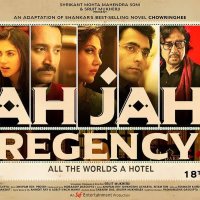Blog Archives
নিস্তরঙ্গ
একরাশ দুঃখের প্যাকেটে
দু’ফোঁটা চোখের জল।
ভীড়ময় রাস্তার ধারে
হাত ধরার অজুহাতে,
আকাশের ওই পারে,
স্মৃতির অবকাশে মিলন।
মন কেমনের পারাপারে
আটকে প্রসঙ্গ
বেঁচে থাকার এই উৎসবে
তোমার ঋতুরঙ্গ।
আসা যাওয়ার মাঝে
ফেরিওয়ালা আজও ডাকে
বনমালী রাধা ছুটে আসে
তোমাকে পাওয়ার বাসনায়।
টেবিলের ওপর ধুলোর কণে,
বইয়ের ডাঁইয়ে, ক্ষণে ক্ষণে,
রাতভোর জীবনের ঢেউ –
নিস্তরঙ্গ মন চলে সমুখপানে।
DISCLAIMER: ALL IMAGES USED IN THIS POST HAVE THEIR RESPECTIVE COPYRIGHTS
Lest we forget – 10 years of ‘Operation Sunrise’ in Nandigram
“The ardour of Deepavali has been dampened in the whole state by the events in Nandigram. Several villages in Nandigram are oscillating from the deepest gloom to panic. Even as of 4pm this day, I have received phone calls from responsible persons in Nandigram saying that several huts are ablaze.
Large numbers of villagers have taken refuge in the local high school in Nandigram, bereft of food and personal security. At the time of writing, the most accurate description for Nandigram is the one used by our Home Secretary, namely, it has become a “war zone”. No government or society can allow a war zone to exist without immediate and effective action.”
These ominous words by then Governor of West Bengal, Gopal Krishna Gandhi, on November 9, 2007 are an indication of the large-scale horror and violence unleashed by the Communist Party of India (Marxist) in Nandigram. Ten years later, the Governor’s words still ring in our ears, reminding of the anarchist, dictatorial regime that once ruled Bengal.
The historic protest march in Kolkata on November 14, 2007
Nandigram had been on the boil since January, 2007, when the Buddhadeb Bhattacharjee led government decided to set up a chemical hub in Nandigram and wanted to forcibly acquire land there. The same party, which was against SEZ elsewhere in India, was vocally supporting an SEZ for a private Indonesian company. Farmers reused to part with their land and the Party unleashed its harmad goons.
Things escalated when police opened fire on protesting farmers on March 14, 2007, killing 14 (official figures; villagers allege hundreds were killed and thrown into a nearby river). Villagers started fleeing their homes and for months, Nandigram became a ‘muktanchal’ (free zone) for CPI(M) cadres. By the end of October, 2007 when the villagers started returning home, the harmads launched a ‘recapture’ spree that led to unprecedented violence.
“Nandigram has become a slaughter house with blood being shed every day. CPM might be at the helm of affairs but the state still belongs to us,” said National Award winning director Aparna Sen, who along with the likes of Rituparno Ghosh, Bratya Basu, Kaushik Sen, Bibhas Chakraborty and other intellectuals boycotted the ongoing Kolkata Film Festival.
There was a outpouring of public anger, which led to a ‘maha michil’ on November 14 in the heart of Kolkata, decrying the barbaric violence by CPI(M) in Nandigram.
The 34 years of Leftist rule in Bengal is marred by unbridled violence. From Marichjhanpi to Memari, Sainbari to Singur, Nandigram to Netai, Nanoor to Keshpur – the comrades left no stone unturned to ensure there is no political opposition to them. Thousands of people have been slaughtered to keep communism alive in Bengal.
They say a nation cannot progress unless you take lessons from history. As Bengal stares at new political formulations in coming days, it is all the more essential to remember the bloodied past and the cost at which ‘Poriborton’ came in 2011.








